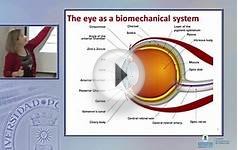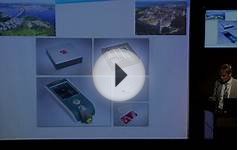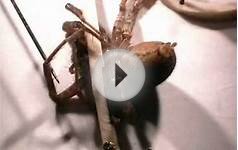 Professor Charles Radcliffe, MS, ME, is a world-renowned engineer lauded as the father of prosthetic biomechanics. He began his distinguished career in the orthotics and prosthetics field in 1948 while in the US Navy as an engineering officer in World War II. He learned of a research opportunity at the University of California in Berkeley while working on laminated plastic aircraft components.
Professor Charles Radcliffe, MS, ME, is a world-renowned engineer lauded as the father of prosthetic biomechanics. He began his distinguished career in the orthotics and prosthetics field in 1948 while in the US Navy as an engineering officer in World War II. He learned of a research opportunity at the University of California in Berkeley while working on laminated plastic aircraft components.
Radcliffe is largely responsible for such pioneering contributions as the quadrilateral socket, patellar-tendon-bearing (PTB) prosthesis, solid ankle cushion heel (SACH) Foot and the four-bar prosthetic knee. In addition, he is credited with providing the fundamental principles of the biomechanics of prosthetic alignment and socket force transfer throughout the amputee gait cycle. His legendary principles still are taught to prosthetists and therapists to this day.
From 1947 to 1956, Radcliffe earned degrees in mechanical engineering at the University of California in Berkeley. He was a principal investigator in the Prosthetics Research Group of the Biomechanics Laboratory at Berkeley for 35 years, when the study of human locomotion and improved artificial limb designs were the highest-funded projects. During this time he also lectured in the Design Division of the Mechanical Engineering Department and was a professor of mechanical engineering from 1956-1988. Currently serving as professor emeritus of mechanical engineering, Radcliffe is involved in continuing to improve the understanding of the four-bar prosthetic knee design.
Quad Socket Development
His first major project as a graduate student, studying the factors underlying alignment of transfemoral prostheses, led to the development of the AK adjustable leg and the alignment duplication jig. These advancements revealed the limitations of the wooden sockets used at that time, which led to the development of the quadrilateral socket. Introduced in 1954, the quad socket was the primary socket used in transfemoral amputees for 20 years. Though this socket has since been redesigned, the fundamental principles of socket design introduced by Radcliffe still are relevant today.
Clinical Theories
As a Fulbright Scholar in the 60s, Radcliffe studied in the Bioengineering Unit of the University of Strathclyde in Glasgow, Scotland, and at the Orthopaedic Hospital in Copenhagen, Denmark. During that time he lectured in several European countries on the proper fitting of lower-extremity prostheses. As one of the major pioneers who studied in Europe, he returned to the US with a number of ideas on how to enhance American socket design for transfemoral and transtibial prostheses.
His clinical theories, particularly on alignment, still are widely accepted in the field to this day. "Ninety-five percent of the clinical theories followed on a day-to-day basis today can be traced back to Radcliffe's work in the 60s, " commented John Michael, CPO, FAAOP, who began his career in 1976. Michael continued, "Radcliffe made a broad range of contributions to clinical thinking. He changed the face of lower-limb prosthetic practice."
What does dream deferred meaning? What is the meaning of bmw logo? where to find the best advice What is standard size of pool que tips? when comparing the raw fruit to its juice counterpart which has the greatest vitamin c difference? how to measure length of pull times how health advice changed since what is the difference between agm and standard battery what is the definition of codependency What does form mean in art? ethical challenges for mental skills trainers when working with soldiers which close marketing definition What time is it in virginia right now? What is the meaning of a light blue ribbon? Tricks to tie shoes when fat? What does premonition mean? How to play speed with cards? how to remove helper bar what advice does victor frankenstein give robert walton in the letters What does maria mean? What are some common symptoms of post covid syndrome? when do sc unemployment benefits end which helper cells activate macrophages How to download netflix on macbook? How to heal a sprained ankle fast? What type of context clue offers a word with the same meaning as an unfamiliar word? How to make philosophy in little alchemy 1? at what age does suze orman advice to collect your social security benefits what is the best love advice how long does hamburger helper last what is snap benefits nyc how to completely remove wondershare helper compact.exe from windows7 on my computer how to cite a dictionary definition in mla What is sar? how many money make tile helper orlando how to measure cholesterol at home what is the difference between a headache and migraine How did jesus change the meaning of passover? how to improve a boxed cake mix How do tips affect your taxes? What does it mean when irs says your refund is being processed? How to become a financial advisor? what is the difference between twin and twin xl mattress How to talk to anyone: 92 little tricks for big success in relationships torrent audiobook?








